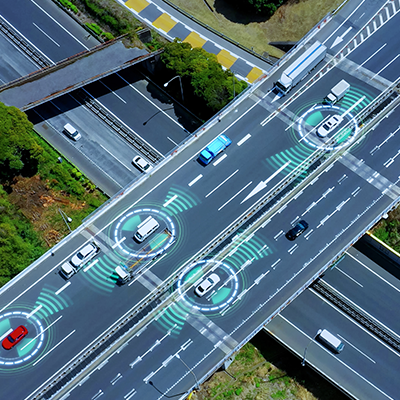- Home
- Services
- Advanced driver-assistance systems (ADAS)
- Electronic stability control
Electronic stability control

Electronic stability control (ESC) is an active element of vehicle safety, which helps drivers avoid accidents by reducing the risk of side-slipping vehicles as well as sudden changes in direction. ESC becomes active when the driver begins to lose control of his vehicle. This is helped by the control unit of the ESC system, which uses an algorithm to calculate the torque of the vehicle in space concerning the axes of the vehicle X, Y, and Z. The ESC sensor is located in the very center of the vehicle. By activating the ABS, the vehicle is brought into the original trajectory of the vehicle.
Tips
- Flashing of ESC system lamp
- Sensation of alternating braking of individual wheels, all wheels are never in the process of braking
- Vehicle de-throttle when necessary
- Vehicle returns in an original trajectory
Scope of services
- ESC signal lamp is continuously on and signals the failure of the system
- Vehicle diagnostics
- Troubleshooting
Find a car workshop
Check out our workshops that offer the service electronic stability control in some of the biggest cities in your country
Additional info about the service
Electronic stability control
The ESC sensor is located in the central part of the vehicle, usually in the tunnel between the front seats. The ESC system is an active safety system on the vehicle. The sensor monitors the movement of the vehicle and the forces acting on it along all three axes horizontal, longitudinal axis X, vertical axis Y, and side axis Z. Measuring the forces acting on the vehicle, the algorithm creates a spatial image of what happens to the vehicle in space or on the road. It is connected to the steering wheel, i.e. it measures the angle of rotation of the steering wheel, measures the engine torque and vehicle speed. It is integrated inside the ABS control panel and this system cannot be switched off on the vehicle.
It is switched on when the control unit reads too much lateral force, i.e. the tendency of the vehicle to slip, and recognizes that it is a bend on the road over the angle of the steering wheel, and recognizes that the vehicle speed is too high for safe swerve. At this point, the ESC independently activates the braking of the individual wheels, coordinated to bring the vehicle into the originally imagined trajectory of the vehicle. Sometimes it also affects the steering mechanism if necessary, as well as the subtraction of engine torque until the lateral forces on the vehicle are within safe swerve. The ESC reacts in milliseconds to balance the moments of the forces around the Y axis, thus preventing the vehicle from landing off the road, uncontrolled sideways slipping or the vehicle rotating. The use of ESC on vehicles has saved many lives in road accidents, and also reduced many fatal consequences The impression that young drivers have that ESC can do anything and that nothing can happen is incorrect. The ESC will correct any minor and unintentional driver errors that have not grossly violated basic physical laws. Otherwise, a car accident is inevitable, unfortunately sometimes with fatal consequences.